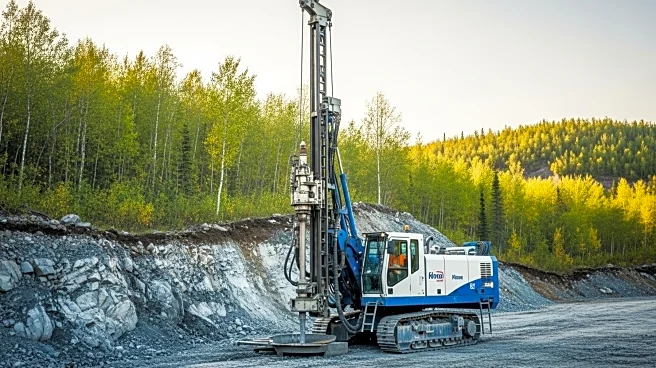What's Happening?
Fury Gold Mines has published a preliminary economic assessment (PEA) for its Eau Claire deposit located in Quebec's James Bay region. The assessment highlights robust project economics, forecasting an average annual production of 76,000 ounces of gold over an 11-year mine life. The all-in sustaining costs are estimated at US$1,140 per ounce, with a base case gold price of US$2,400 per ounce. This scenario results in an after-tax net present value of C$554 million at a 5% discount rate and an internal rate of return of 41%, with a payback period of 2.7 years. Initial capital costs are projected at C$217 million. CEO Tim Clark emphasized the use of conservative price assumptions to ensure realistic expectations, noting that higher gold prices could significantly increase the net present value.
Why It's Important?
The PEA underscores the potential for significant economic returns from the Eau Claire deposit, which could attract investor interest and drive development in the region. The flexibility in development scenarios, including a toll milling option, enhances the project's attractiveness by reducing upfront capital requirements and increasing the internal rate of return. This positions Fury Gold Mines as a competitive player in the gold mining sector, particularly as gold producers seek smaller, high-grade assets with strong margins and jurisdictional stability. The exploration potential, including the Hinge zone and Cannard deformation zone, further adds to the long-term growth prospects.
What's Next?
Fury Gold Mines plans to advance the Eau Claire project towards development, leveraging its high-grade resources and established infrastructure. The company anticipates several catalysts in the coming months, including exploration results from Committee Bay in Nunavut and properties acquired through Quebec Precious Metals. These developments could further enhance the project's value and attract additional investor interest.
Beyond the Headlines
The strategic location of the Eau Claire deposit in Quebec's James Bay region offers jurisdictional stability, which is increasingly important for investors in the mining sector. The combination of high-grade mineralization and established infrastructure provides a competitive advantage, potentially leading to long-term economic benefits for the region.











